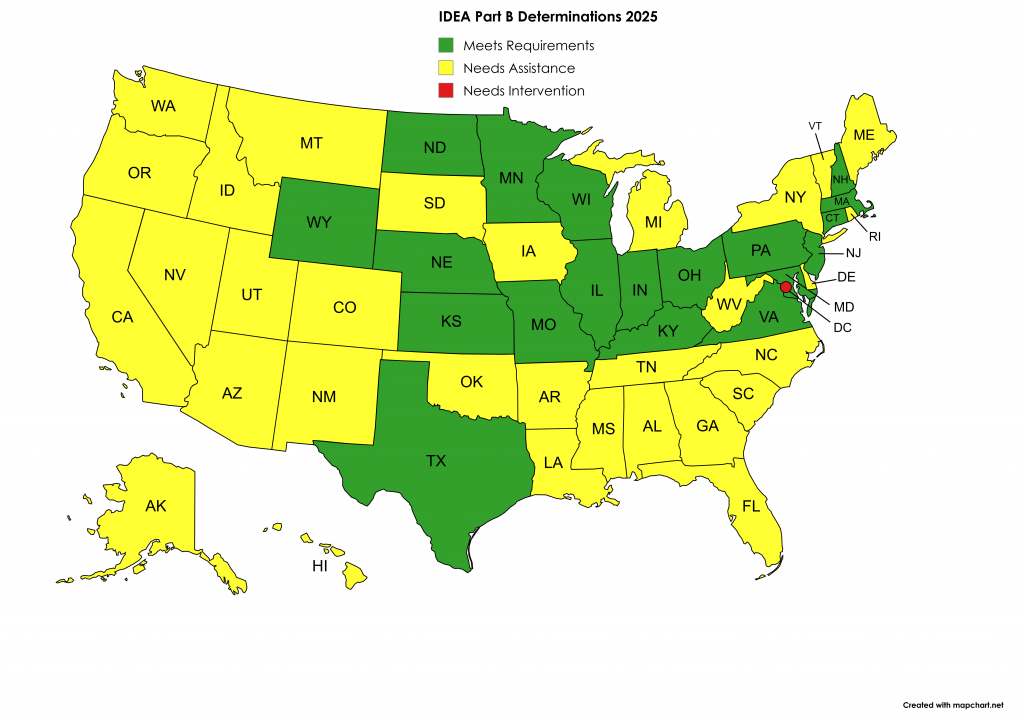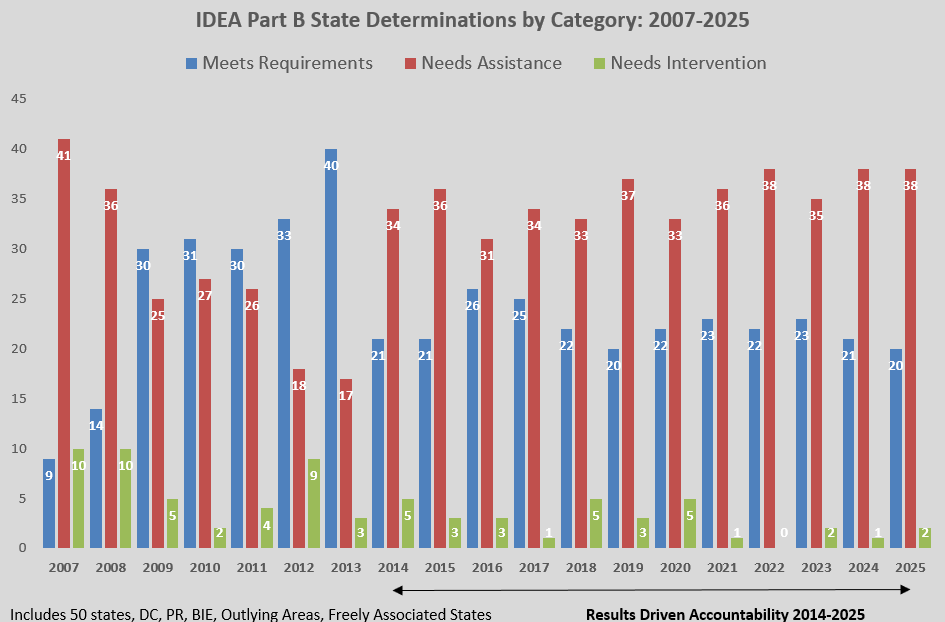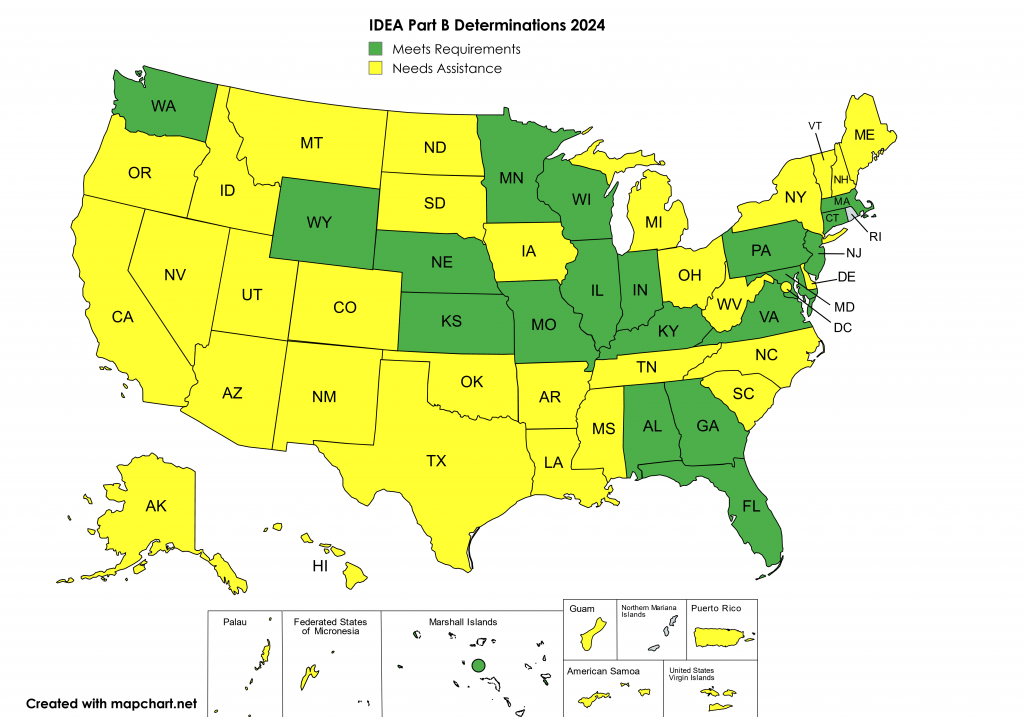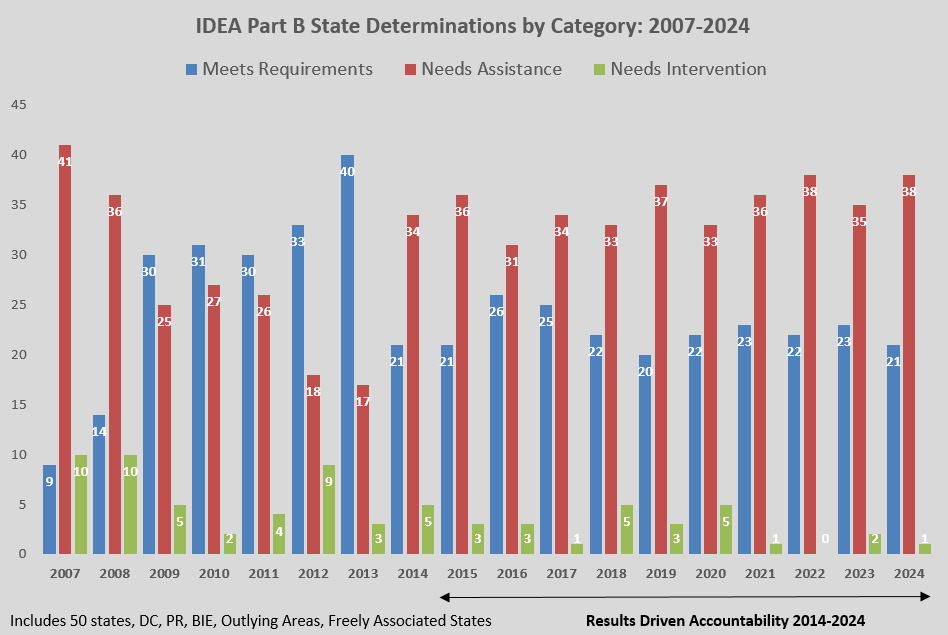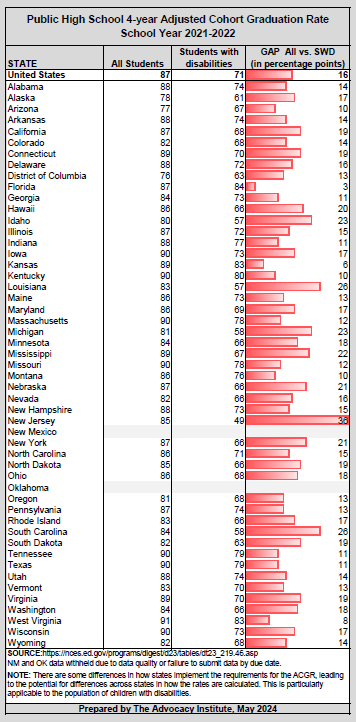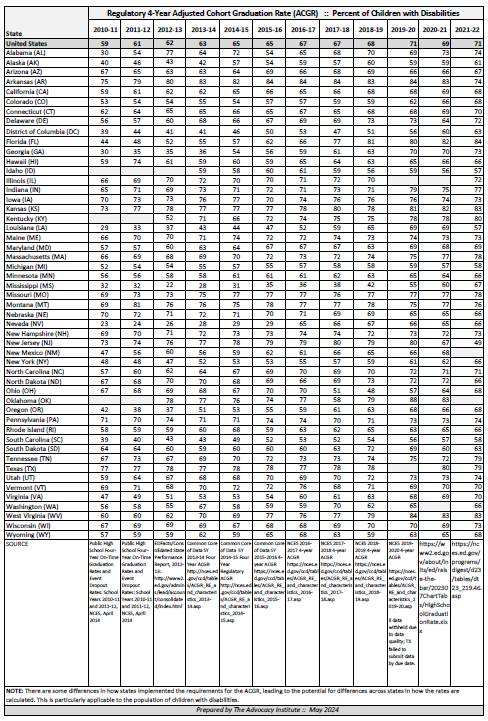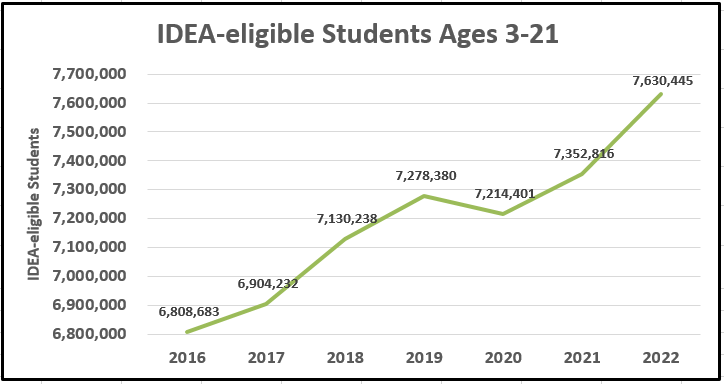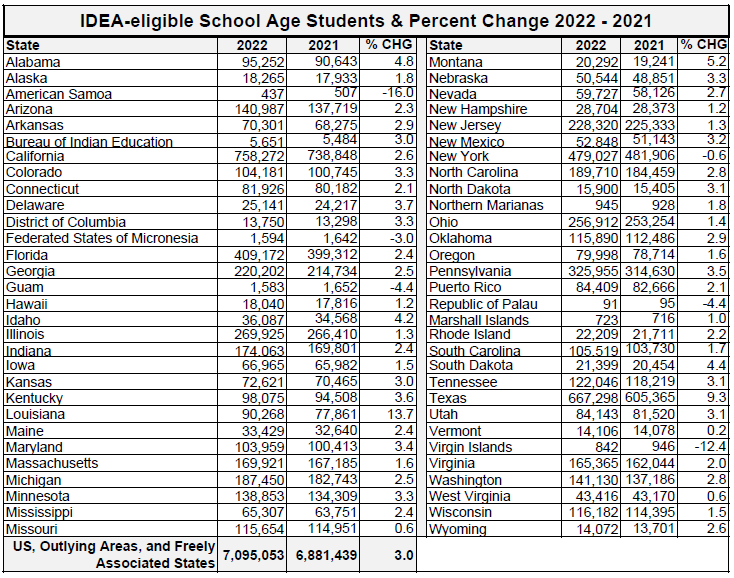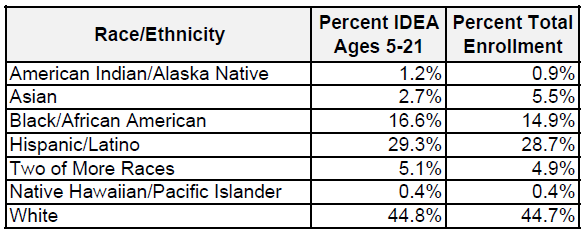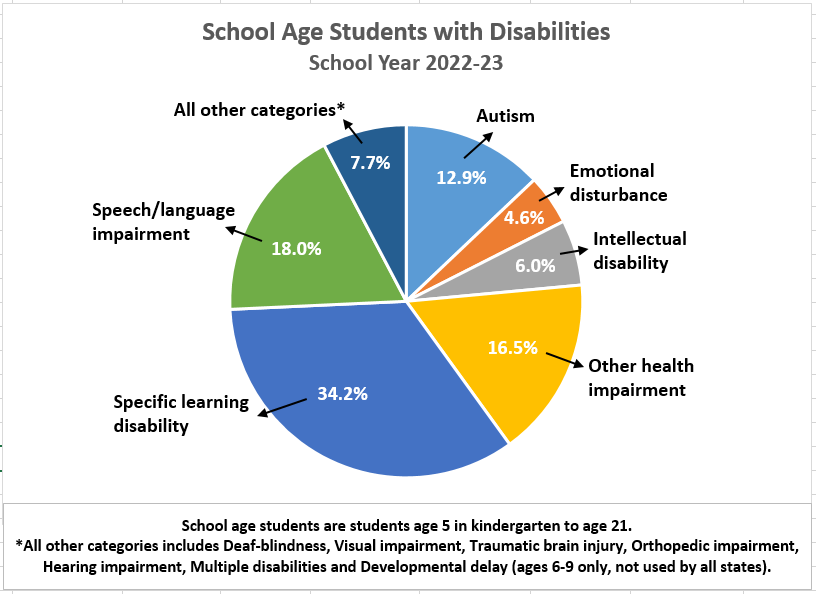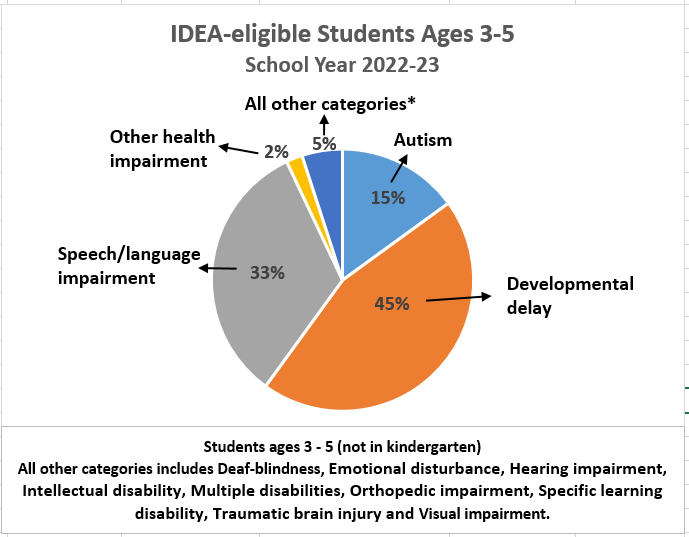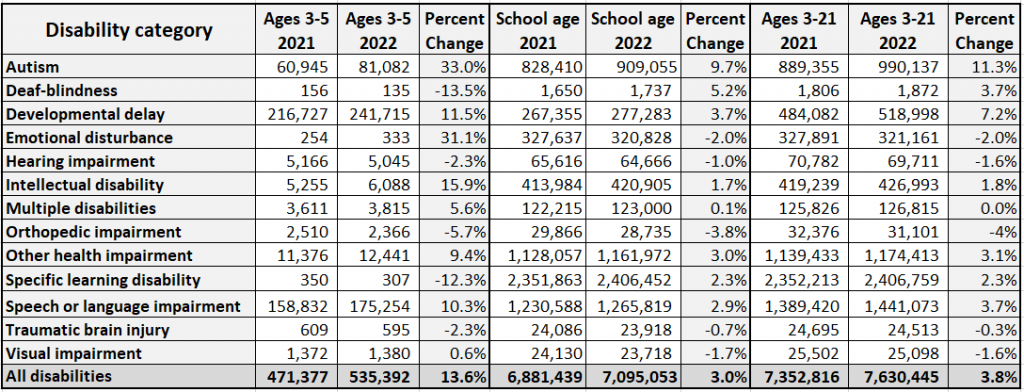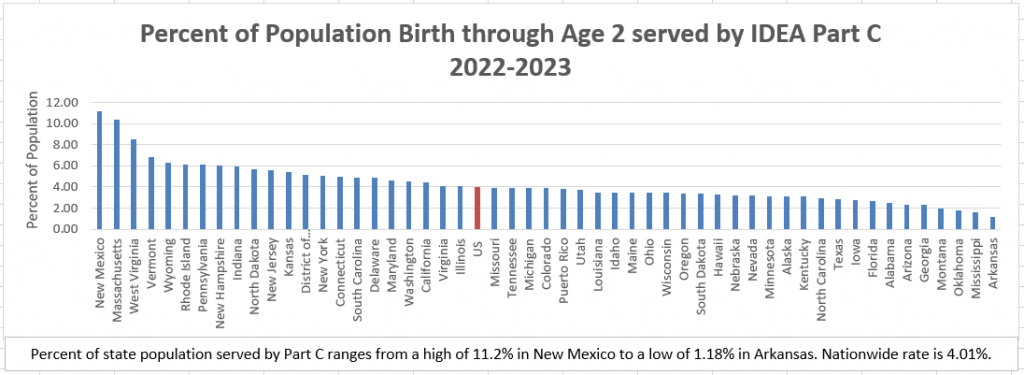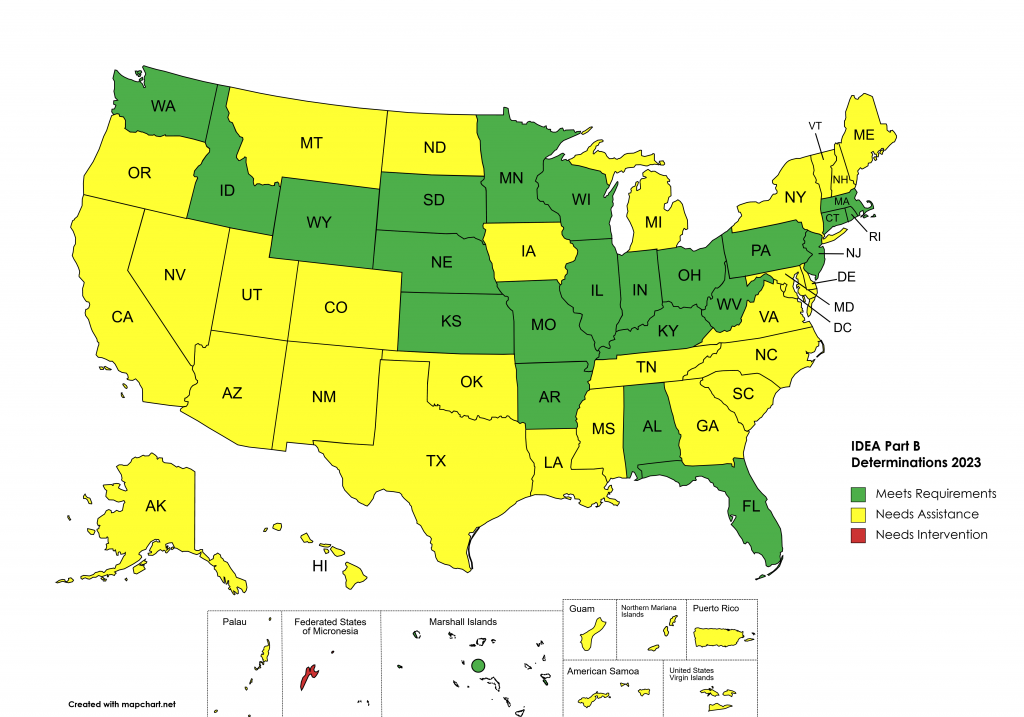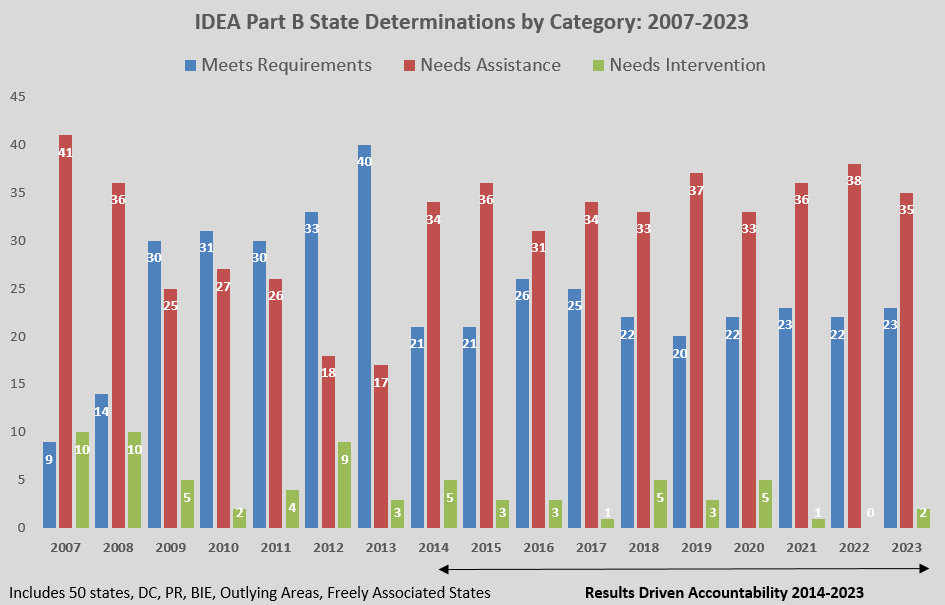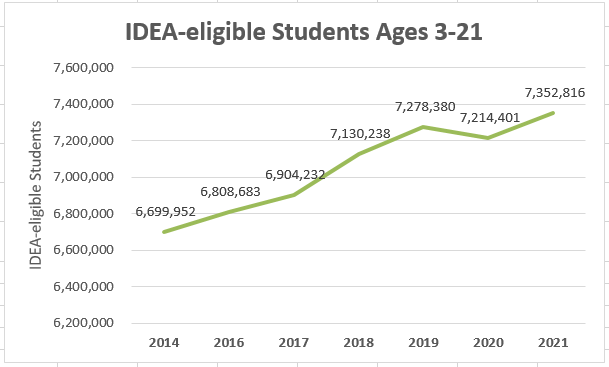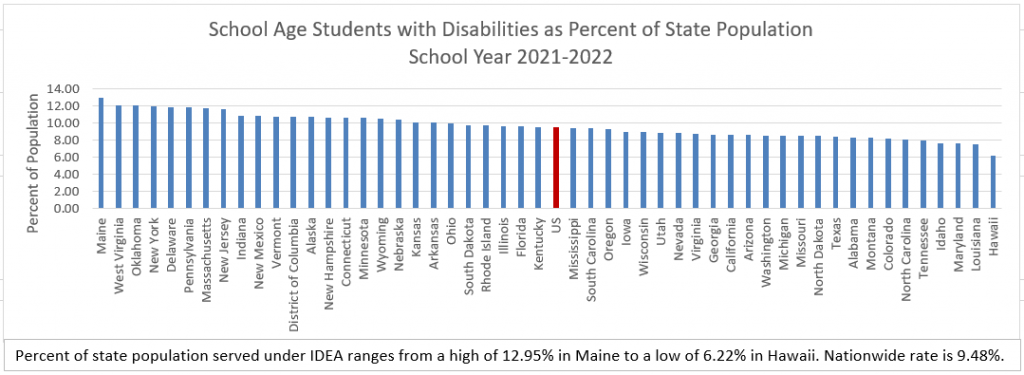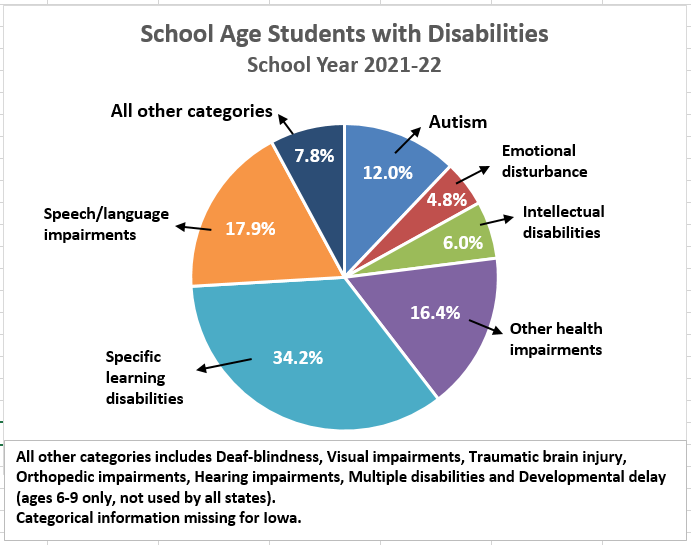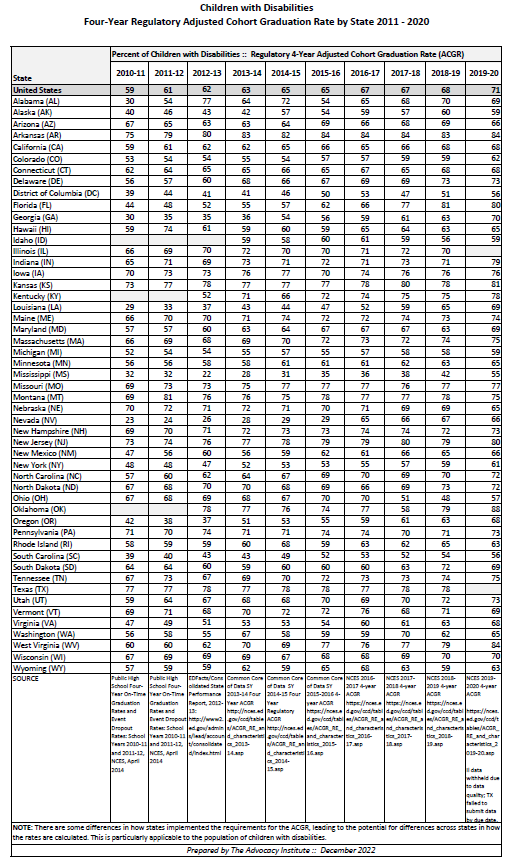Proposed change to Annual State Application for IDEA Funds creates confusion; should be opposed
On Friday, August 22, 2025, the U.S. Dept. of Education Office of Special Education and Rehabilitative Services (OSERS) published a notice in the Federal Register announcing a plan to eliminate the requirement that states must report significant disproportionality data collection under IDEA section 618(d) in their Annual State Application for Federal funds under Part B of the IDEA.
Interested persons are invited to submit comments on or before October 21, 2025. Submit comments at https://www.regulations.gov/document/ED-2025-SCC-0481-0001.
The proposed change reads as follows:
“Information Collection 1820-0030 is being revised to remove the Significant Disproportionality data collection under IDEA section 618(d) and 34 CFR 300.646 and 300.647 from Section V of the Annual State Application under Part B of the IDEA”
Unfortunately, this proposed change has been misconstrued to mean that the U.S. Dept. of Education (USED) will stop requiring states to collect data on significant disproportionality in special education. An article in the K-12 Dive helped fuel this misinterpretation, with its misleading headline “Proposal would remove federal data collection for special education racial disparities.” And Disability Scoop weighted in with this article “Ed Department Plans To Scale Back IDEA Data Collection.”
This proposal would remove Section V of the Annual State Application for IDEA Part B funds. But states are rarely required to complete this section. Here’s why: In 2020 the Office of Special Education Programs (OSEP) at the USED required every state to submit a Significant Disproportionality Reporting Form which provided a summary of information on procedures that comply with the Significant Disproportionality requirements under 34 CFR § 300.647(b)(7). The 2020 reporting forms are available at https://www.ed.gov/laws-and-policy/students-disabilities-laws-and-policy/osep-monitoring–significant-disproportionality-reporting-under-idea-part-b.
In each of the ensuring 5 years (2021-2025), states have only been required to respond to Section V if the state has made changes to its initial 2020 submission. (In fact, many states leave it out completely since it does not warrant a response.)
The instructions for submitting the 2025 application for funds clearly states:
“All States submitted the Significant Disproportionality Reporting Form, as required, with their FFY 2020 IDEA Part B State Application. After the initial submission of the Form, States are only required to submit the Form with any future annual IDEA Part B State Applications if the State modifies its risk ratio thresholds, minimum cell sizes, minimum n-sizes, standards for measuring reasonable progress, and rationales for each, or the number of years of data used in making annual determinations of significant disproportionality.” (Only two states – Alabama and Tennessee – have submitted updated reporting forms between 2021 and 2025.)
To be clear, eliminating Section V would have no impact on the IDEA’s requirement for states to collect and report data on significant disproportionality.
This requirement is found at https://sites.ed.gov/idea/statute-chapter-33/subchapter-ii/1418/d and states:
“Disproportionality
(1) In general
Each State that receives assistance under this subchapter, and the Secretary of the Interior, shall provide for the collection and examination of data to determine if significant disproportionality based on race and ethnicity is occurring in the State and the local educational agencies of the State with respect to—
(A) the identification of children as children with disabilities, including the identification of children as children with disabilities in accordance with a particular impairment described in section 1401(3) of this title;
(B) the placement in particular educational settings of such children; and
(C) the incidence, duration, and type of disciplinary actions, including suspensions and expulsions.
(2) Review and revision of policies, practices, and procedures
In the case of a determination of significant disproportionality with respect to the identification of children as children with disabilities, or the placement in particular educational settings of such children, in accordance with paragraph (1), the State or the Secretary of the Interior, as the case may be, shall—
(A) provide for the review and, if appropriate, revision of the policies, procedures, and practices used in such identification or placement to ensure that such policies, procedures, and practices comply with the requirements of this chapter;
(B) require any local educational agency identified under paragraph (1) to reserve the maximum amount of funds under section 1413(f) of this title to provide comprehensive coordinated early intervening services to serve children in the local educational agency, particularly children in those groups that were significantly overidentified under paragraph (1); and
(C) require the local educational agency to publicly report on the revision of policies, practices, and procedures described under subparagraph (A).”
Implementing Federal regulations are found at 34 C.F.R. §§300.646 and 300.647 .
States comply with this provision by reporting on significant disproportionality in the State Performance Plan/Annual Performance Report under Indicator 9 Disproportionate Representation and Indicator 10 Disproportionate Representation in Specific Disability Categories. These are compliance indicators, the annual target must be zero, and the state’s performance on each indicator is considered when making the annual determinations on state implementation of IDEA.
States annually report the number of LEAs required to use IDEA funds for comprehensive coordinated early intervening services (CEIS) as part of the Section 618 data collection. The CEIS data is also included in the Annual Report to Congress on the Implementation of IDEA.
State compliance with the IDEA’s significant disproportionality requirements can also be reviewed as part of OSEP’s Differentiated Monitoring and Support 2.0 system. If found out of compliance, a state would be required to take corrective actions.
OSERS claims that “The Department believes that removal of the data collection related to Significant Disproportionality will reduce the burden on respondents when completing the Annual State Application under Part B of IDEA.” However, since states rarely need to respond to Section V, the burden seems trivial at best.
OSERS SHOULD RETAIN SECTION V FOR THE FOLLOWING REASONS:
- OSEP relies on states’ response to Section V to ensure transparency regarding the implementation of the requirements around significant disproportionality and alert the public when a state is making changes to how it implements the Federal regulations.
- States must provide a public comment period of at least 30 days for their annual application for IDEA Part B funds, so Section V of the application ensures that stakeholders are aware of any changes a state is making to its reporting form. Eliminating Section V would remove the only notice of changes to states’ implementation of the IDEA’s requirements on significant disproportionality.
Commenters are encouraged to urge OSERS to retain Section V of the Annual State Application under Part B of the IDEA.
Submit comments at https://www.regulations.gov/document/ED-2025-SCC-0481-0001 by October 21, 2025.
See also:
– OSEP Monitoring — Significant Disproportionality Reporting Under IDEA Part B
